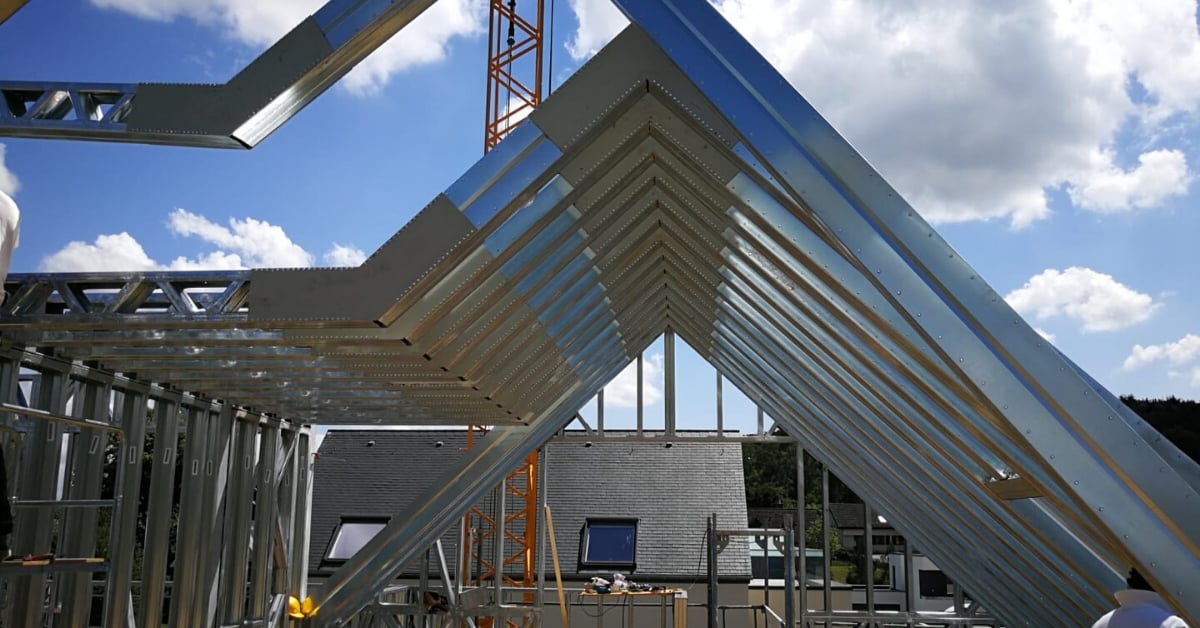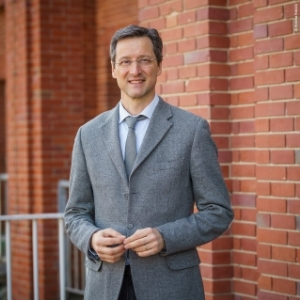There are new opportunities for architecture oriented towards customisation and integration, thanks to the dialogue between town planning design, construction and technological innovation.
With dry construction, the worksite becomes an assembly workshop where it is possible to respond more effectively to the increasingly strict legislation on environmental sustainability, energy savings and earthquake-proofing, without excluding design.
The choice of this building method involves the entire construction chain, from the designer to the builder.
Is it right to view it as the choice for the future?
Light components and functional layers
In Italy, prefabrication and dry construction are a long tradition in commercial, industrial and public construction, but have been less frequently applied to residential construction.
However, recently we have seen that the benefits of this building technique have opened many interesting opportunities for application in residential buildings.
The stars are the light components to be assembled onsite, like building with Meccano. Bolts and spanners instead of mortar and trowels.
The building becomes an integrated set where the structural aspects, the envelope and the systems intermingle.
In fact, the dry construction system is based on the prefabrication and mechanical assembly of several functional layers, made up of elements that are supplied to the worksite certified and ready to be assembled on a light and resistant framework made of steel, wood, reinforced concrete.
The specialised workers, who work in the dry worksite, have the task of putting these elements together in accordance with a very detailed design that has been prepared in advance.
Dry construction and its advantages
The dry construction technique guarantees better quality, higher safety and efficiency.
This guarantees cost effectiveness, both while the project is being built and later, when the building is maintained.
In the past, the idea of prefabrication was associated with a limited catalogue of building components to combine to form a complete building, characterised by modular rigidity.
This aspect was thus seen as a limitation to customisation and design creativity and as the reason for the simplicity and seriality of low architectural and technological quality buildings. Ready-to-use buildings for emergency situations or temporary solutions.
In truth, nowadays prefabrication involves the building elements and the components which are destined to become part of a final project, which can be customisable and of high quality.
Elements manufactured with the precision of industrial production can be combined with a free hand when it comes to design: beams, pillars, uprights, cross-pieces, walls, floors, roofs, unique works or works that can be repeated on a large scale.
The architecture/industry nexus, which felt impossible for a long time, has found a real possibility for development.
The most incredible aspect is that this can be achieved with total freedom in the materials to be used.
Reversibility and predictability
Dry construction, either in layers or by assembly, foresees the use of products that are the result of controlled and certified industrial processes.
This is why the actual performances of the work are those foreseen by the design, without surprises.
Moreover, each element can be inspected, replaced or implemented over time. In fact, reversibility is one of the characteristics of dry construction.
This makes it possible to avoid having recourse to raw materials for the production of new components, with positive results for eco-sustainability.
Variety of materials and imagination
In dry construction, the designer has access to a large variety of building materials, depending on the desired performance.
No material, no shape is out of bounds.
Everything is possible, because dry construction is versatile. It bends to the designer’s composition ambitions. One of the advantages of dry constructions, in fact, is freedom from hollow-core concrete.
The idea on which the design is based is not limited by predefined modules; quite the contrary: dimensions, shapes, openings, finishes find new ways of combining harmoniously.
In fact, prefabrication cannot be separated from a clear definition of each detail of the design.
Each component, be it a joint or a connection, is conceived and defined from the design phase based on the expected performance of the entire building and the desired aesthetic effect.
This entails a low risk of execution defects and maximum performance in terms of earthquake-proofing and thermal insulation and soundproofing.
Cost effectiveness
Precisely thanks to the detailed design of all elements, the cost of the entire building can be estimated more precisely in advance compared to traditional worksites.
The use of BIM (Building Information Modeling) technology reduces error margins, worksite delays and introduces the culture of industrialisation.
Lower risk of execution errors means reduced and certain times and costs.
Duration of the works
One of the most appreciated advantages of the dry construction technique actually concerns the reduced duration of the worksite, an important aspect to take into account especially during interventions on existing buildings.
Once the detailed technical design is ready, the various elements can be produced simultaneously, optimising worksite delivery times.
In addition, the drying stages that are typical of traditional wet construction are not required.
Quality and longevity
The intrinsic features of dry construction are the reason behind the building’s high quality, that can be reached both during the design and the execution.
Another result of this type of construction process is an environment that can guarantee high levels of internal well-being: design, architectural functionality, air hygiene, thermal and acoustic comfort, safety.
Building quality is therefore combined with living space quality.
Moreover, the careful design and the state-of-the-art execution also form the bases for longevity and for the building maintaining its high value over time.
Integration
Dry construction offers very high performances, thanks to the detailed design that analyses and develops each building as a unique organism.
The frame becomes the receptacle for technological systems, organised in accordance with a planned sequence.
Ventilation and air-conditioning systems, water, electricity and gas installations take advantage of the gaps so as not to reduce the rooms’ internal space and to be easy to inspect.
Eco-sustainability and energy efficiency
The dry construction system is eco-sustainable because the elements can be broken down and can, therefore, be recycled, reused or disposed of.
This reduces the impact of a possible decommissioning of the building.
Moreover, the energy consumption of this type of building can be calculated and controlled at all stages, from the production of the individual elements to the possible decommissioning of the building.
In addition, these systems are designed precisely to save energy and are thus made to optimise consumption and reduce costs.
Thermal insulation, soundproofing are guaranteed by the performance-related characteristics of the individual components and by the precise laying, while systems are required to optimise energy consumption.
Earthquake-proof lightness
The light load-bearing structures, made of wood or steel, are sized with reference to the earthquake zone, to guarantee the building’s statics.
Furthermore, wood and steel offer more flexibility compared, for example, to concrete and brick walls and are, therefore, less sensitive to dynamic stress.
The adoption of lining elements and envelope-structure joints that are semi-independent from the load-bearing frame makes for a better absorption of the structure’s movements during an earthquake.
This is why this building system is suited to earthquake-proof designs.
Dry construction is like a protective shell, not unlike the chassis of a car, designed for passenger safety.
The “dry” and “light” aspects therefore seem to address all the requirements of modern living, from design to comfort, taking its place in the environment with a light footprint.


